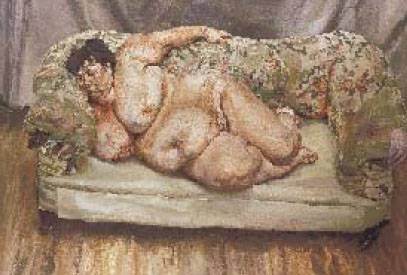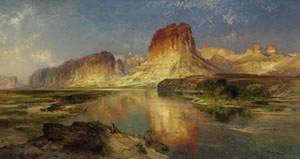
Gian Lorenzo Bernini
Italian, 1598-1680
Corpus, around 1650
bronze
Height: 174.0 cm (68 1/2 “)
Gift of the Murray Frum Family, 2006
Photo Copyright: Salander – O’Reilly Galleries / Maggie Nimkin.
Collection, Art Gallery of Ontario, Toronto
$50 million Bernini donated to Ontario
(TORONTO: January 11, 2007) A rare sculpture from the Italian Baroque period, Gian Lorenzo Bernini’s Corpus, is being donated to the AGO by noted collector Murray Frum and his family.
]]>
Corpus is one of the largest bronzes by Bernini, measuring approximately 5 feet, 6 inches. One of the most significant Old Masters works still in private hands, the crucifix was cast around 1650. The Frum gift, which would be worth in excess of $50 million in the current market, is further distinguished by the fact that the artist created it expressly for himself.
To be unveiled in June at the AGO as part of its summer exhibition, Corpus will become the second Bernini sculpture in the Gallery’s permanent collection. A marble portrait bust of Pope Gregory XV, 1621, was donated to the AGO by Joey and Toby Tanenbaum in 1997. The National Gallery of Canada owns the only other Bernini sculpture in a Canadian public collection — a marble portrait bust of Maffeo Barberini, Pope Urban VIII, c. 1632, purchased in 1974.
” Corpus was immediately appealing because of the beauty and emotion of the subject,” says Frum, chairman of the Frum Development Group, a member of the AGO Board of Trustees and long-time supporter of the Gallery. “When we learned that it could be traced back to Bernini’s own collection and was an object that he made for himself, it was clear we were in the presence of a unique work of art, a masterpiece that would be a highlight of any collection.
“I have long felt that the AGO’s importance was established by the Henry Moore collection and that the Gallery should build on the sculpture portion of its permanent collection,” Frum adds. “The Bernini Corpus will make all of the sculptures at the AGO even more significant.” A leadership donor to the Transformation AGO campaign, Frum is a well-known collector of sculpture, particularly African and Oceanic art. The AGO’s celebrated Frum Collection of African Art contains more than 80 pieces dating from the 10th century to the mid-20th century.
“Thanks to the vision and generosity of the Frum family, Corpus will figure prominently in our re-installation of the Old Masters collection to be unveiled in 2008,” says Matthew Teitelbaum, the AGO’s Michael and Sonja Koerner director, and CEO. “Their extraordinary gift will underscore the international significance of our Old Masters works.”
Bernini (1598-1680) is considered the most important sculptor, architect, draughtsman and painter of the 17th century. He was a celebrated child prodigy who trained in his father’s studio and carved his first portrait at age ten. Except for a six-month period in 1665 in Paris when he worked on designs for the Louvre, he worked exclusively in Rome.
Of the three casts made of Corpus , a slightly smaller version was commissioned by or for King Philip IV of Spain in the mid-1600s to be placed in the Chapel of the Kings of Spain at the Escorial where it remains today. A second cast, on a much reduced scale, was ordered by Cardinal Antonio Barberini around 1655 and is presumed to have been destroyed during the French Revolution. The AGO bronze was part of Bernini’s personal collection until 1665. During the 19th century little was known about the location of the piece, but it resurfaced later in North American private collections in the early 1900s.
“The delicate finish of the bronze surface imparts a startling life-like appearance to the Christ figure,” says the AGO’s acting curator of European art, Michael Parke-Taylor. “It is hard to believe it is made out of bronze.”
“Bernini achieved unprecedented naturalism in the representation of the human form in bronze,” says Teitelbaum. “The naturalism of Corpus is in keeping with the concern of Baroque artists to bring the divine vividly within the realm of human experience.”
With the addition of this second Bernini sculpture, the AGO will feature a superlative collection of Baroque artworks. When Transformation AGO is complete in 2008, the Gallery will present Peter Paul Rubens’s monumental Massacre of the Innocents , c.1611-12, from the Thomson Collection. Rubens is considered the foremost exponent of Flemish Baroque art. Complementing this painting in the AGO’s collection is Rubens’s turbulent oil sketch The Raising of the Cross , c. 1638, which was purchased by the Gallery in 1928.
With a permanent collection of more than 66,000 works, the Art Gallery of Ontario is among the most distinguished art museums in North America. In 2002, the Gallery began an extraordinary chapter in its 107-year history when it launched Transformation AGO. Multi-faceted in scope, Transformation AGO involves the unprecedented growth of the permanent collection, an innovative architectural expansion by world-renowned architect Frank Gehry, and the strengthening of the museum’s endowment resources. As the imaginative centre of the city, the transformed AGO will dramatically enrich our visitors’ experiences and provide new access to the full vibrancy of the art museum. Boldly declaring that art matters, the new AGO will re-open fully in 2008.
More information: National Gallery of Ontario
Follow us on:


